- Products
- Email Verifier Verify emails addresses individually, in bulk or through API, with 98%+ accuracy
- Email Finder Find individual or bulk emails by entering the person & company name or domain
-
Form Guard Protect your forms from spam, bots, and invalid submissions with real-time email, phone, and name verification.
- Prospect SQL/MQL list building with high levels of personalization, real-time data enrichment and prospect search
- Clearout For SheetsVerify email addresses directly on Google Sheets with Clearout for sheets add-on
- Prospect – LinkedIn Chrome ExtensionBuild verified, targeted prospect lists directly from LinkedIn profiles
- ClearoutPhoneValidate phone numbers across 240+ countries in bulk, quick or real time validation Free Tools
- Disposable Email Checker
- Reverse LinkedIn Profile Lookup Tool
- Reverse Email Lookup Tool
- Email List Cleaner
- ResourceDEVELOPER
API
Clearout APIs are structured around REST and JSONWebhooks
Capture real-time events in your application workflowForm Guard
Real-time form validation to keep bad contacts out of your CRMKNOWLEDGE BASEGetting started
Sending campaigns without bounces is made simpleFAQ
Easily find answers to services, security and common questionsUSE CASESLead Generation
Learn how professionals generate quality leadsGUIDESPricingTransparent & flexible pricing to support pay-per-use or recurringCompare Email Verification Tools
AI-powered email verification with 99%+ accuracy, real-time validation, and transparent risk scoringCompare Email Finder Tools
Pre-verified B2B email addresses with confidence scoring, find real person email, not role-based addressBLOGSEmail Verification ToolsFind Anyone’s Email Address
Most Accurate, Fast & Free WaysForm Validation
Importance, Ways & Best PracticesView All Blogs - Pricing
- Integrations
- Enterprise
- Login
Create an Email Sequence That Works ( Expert Tips + Examples)
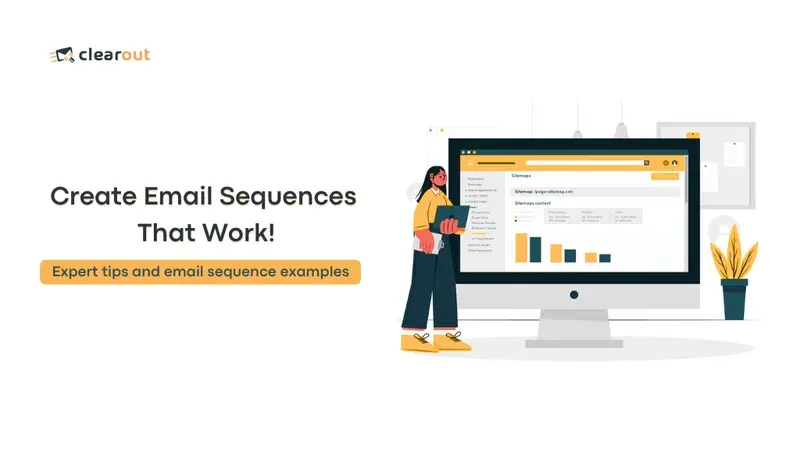
Have you ever opened an email and felt like it was written just for you?
What if your business could create that same feeling every time for your subscribers?
Email sequences aren’t just a marketing tool; they’re your opportunity to start meaningful conversations with your audience. When done right, they can guide your subscribers on a journey—whether it’s learning about your brand, solving a problem, or making a purchase.
So, how do you turn a simple email series into a powerful relationship-building tool?
Let’s break it down and create email sequences that not only convert but also leave a lasting impression.
What if your business could create that same feeling every time for your subscribers?
Email sequences aren’t just a marketing tool; they’re your opportunity to start meaningful conversations with your audience. When done right, they can guide your subscribers on a journey—whether it’s learning about your brand, solving a problem, or making a purchase.
So, how do you turn a simple email series into a powerful relationship-building tool?
Let’s break it down and create email sequences that not only convert but also leave a lasting impression.
Table of Contents:
What Is an Email Sequence?
An email sequence is a strategic series of pre-written emails sent automatically to subscribers based on specific triggers or timelines.
It's not merely a tool for automation; it’s about crafting personalized journeys that guide your audience through various stages, such as from initial discovery to purchase or from inactivity to re-engagement.
It's not merely a tool for automation; it’s about crafting personalized journeys that guide your audience through various stages, such as from initial discovery to purchase or from inactivity to re-engagement.
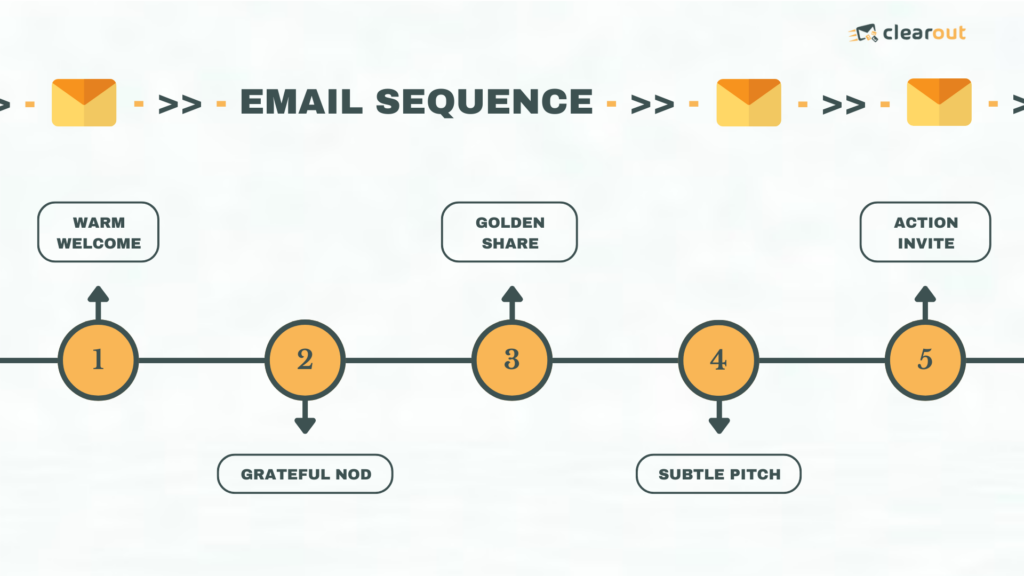
When executed effectively, email sequences save time and enhance the subscriber experience by delivering content that feels tailored to their needs and behaviors, fostering stronger connections and driving desired actions.
Did You Know?
Automated email sequences can generate 320% more revenue than standalone campaigns. Imagine having a digital salesperson working tirelessly for you 24/7—this is the power of a well-crafted email sequence.
Automated email sequences can generate 320% more revenue than standalone campaigns. Imagine having a digital salesperson working tirelessly for you 24/7—this is the power of a well-crafted email sequence.
Difference Between Drip Sequence and Email Sequence
Often people get confused between drip email campaigns and email sequences. But they are not the same. An email sequence is a broader term than a drip campaign, implying a different approach. Here are some of the key differences:
| Feature | Drip Sequence | Automation Sequence |
|---|---|---|
| Content | Static - does not change based on recipient behavior | Dynamic - changes based on user actions |
| Trigger | Sent at fixed intervals, scheduled once | Triggered by specific user actions |
| Complexity | Easier to set up, minimal segmentation needed | More complex, benefits from well-defined user segmentation |
| Examples | - Welcome emails - Sales emails (e.g., Black Friday, Cyber Monday) | - Abandoned cart emails - Special access for high-paying customers - Birthday and anniversary emails |
| Objective | Consistent communication, and nurturing over time | Personalized engagement based on real-time user behavior |
While both can be personalized and consist of a series of emails, email sequences are more personalized and adaptive to subscriber behavior, making them distinct from the more static and broad-reaching drip campaigns.
Different Types of Email Sequences
Email sequences can be categorized into two types: trigger-based and time-based.
1. Trigger-Based Email Sequences
These sequences are activated by the subscriber's actions, such as:
- Subscription: Triggered when someone subscribes to your list.
- Browsing Habits: Based on pages or products they view.
- Content Preferences: Tailored to the type of content they engage with.
- Abandoned Cart: Prompted when they leave items in their shopping cart.
- Purchase History: Follow-up emails after a purchase.
2. Time-Based Email Sequences
These sequences are scheduled based on specific time intervals rather than actions, ensuring ongoing engagement:
- Post-Subscription: Sent shortly after someone subscribes.
- Follow-Up: One month after the last purchase.
- Anniversaries: Marking the anniversary of their subscription.
- Re-Engagement: After six months of inactivity.
For optimal effectiveness, many email marketing strategies combine both types of sequences. For example, a welcome sequence (trigger-based) can transition into a regular newsletter (time-based) to keep the subscriber engaged over the long term.
10 Things That Help You Create Better Email Sequences
1. Build a Targeted Email List
Your email sequence is only as good as your audience. Building a targeted list means focusing on quality over quantity.
- Capture Relevant Leads: Use opt-in forms that target specific audiences. For example, a form offering “Tips for Busy Professionals” will attract individuals genuinely interested in productivity solutions.
- Ditch the Generic Leads: Avoid buying email lists. Not only are these practices unethical, but they can also flood your list with invalid or unengaged contacts..
Segment your list-building strategy by offering different lead magnets (e.g., eBooks, webinars) tailored to subgroups within your audience. The more precise your targeting, the better your results.
2. Research Your Prospects Thoroughly
Thorough research on your prospects is crucial for crafting personalized and impactful messages that resonate with their specific needs and challenges. Find answers to:
- What Are Their Pain Points? Identify their challenges through surveys, social listening, or analyzing past interactions.
- What Motivates Them? Research trends, preferences, and behaviors to craft messages that resonate.
For example, if you’re targeting eCommerce store owners, research their current trends, such as holiday sales, and challenges, such as abandoned carts, to tailor your message.
Use tools like LinkedIn, industry forums, or niche-specific communities to uncover insights beyond demographics.
Use tools like LinkedIn, industry forums, or niche-specific communities to uncover insights beyond demographics.
3. Segment and Personalize Like a Pro
Generic emails are a one-way ticket to the spam folder. To engage your audience, segment them into smaller, more focused groups based on:
- Behavior: Who clicked but didn’t purchase? Who hasn’t opened your emails in months?
- Demographics: Tailor content to age, location, or industry.
- Lifecycle Stage: New subscribers need a welcome series, while loyal customers may appreciate exclusive perks.
Personalization isn’t just about using a first name—it’s about making every email feel relevant to the recipient.
Instead of, “We’ve launched new products” say, “Hey Jane, based on your last purchase, you’ll love these!”
Instead of, “We’ve launched new products” say, “Hey Jane, based on your last purchase, you’ll love these!”
4. Write Emails That Speak Directly to Your Audience
Writing emails isn’t just about great copy—it’s about creating moments that matter:
- Use Conversational Language: Write as if you’re speaking to a friend. For example, instead of saying, “Our product is the market leader,” say, “We think you’ll love this because it solves [specific problem].”
- Create Hooks: The first line of your email is just as important as the subject line. Start with a question, bold statement, or relatable anecdote.
- CTA That Feels Natural: Your call-to-action (CTA) should flow naturally within the email. Avoid pushy phrases like “BUY NOW!” Instead, try something like, “Take a look and see what you think.”
Keep your tone aligned with your audience. A SaaS audience might prefer professional yet friendly language, while a Gen Z audience might appreciate humor and emojis more.
5. Focus on Best Deliverability Practices From Day One
Even the best email content is useless if it doesn’t land in the inbox. Here’s how to optimize deliverability:
- Authenticate Your Emails: Use protocols like SPF, DKIM, and DMARC to signal to ISPs that your emails are legitimate.
- Warm Up Your Domain: Gradually increase your email-sending volume, especially if you’re using a new domain. ISPs flag sudden spikes as suspicious.
- Monitor Reputation: Use tools like Google Postmaster to track your domain’s health.
- Clean Your Email Lists: Consistently prune inactive or invalid emails from your list using a tool like Clearout. This ensures your sender reputation remains strong.
📌 Must read: Reasons for low deliverability & how to fix it!
6. Avoid Spammy Content, and Follow Email Design Guidelines
Sometimes even when you do everything right a small mistake can lead to your emails getting flagged as spam. Here are some absolute no-no if you want to avoid landing into spam folder.
- Avoid Spam Triggers: Phrases like "Make money fast!" or excessive exclamation points can land your emails in spam folders. Write naturally and keep your formatting clean to avoid this.
- Design for Readability: Balance text and visuals in your emails. Stick to one main call-to-action (CTA) per email to prevent confusing your readers.
- Accessibility Matters: Use alt text for images, readable font sizes, and proper html formatting to make your emails accessible and look more credible.
By validating your content and adhering to these design guidelines, you can create more effective and engaging email sequences.
7. Use a Trusted ESP
The foundation of any successful email campaign lies in the platform you choose.
- Why Trusted ESPs Matter: Established ESPs like Mailchimp, ActiveCampaign, or HubSpot come with built-in tools for compliance, analytics, and deliverability.
- Features to Look For: Choose an ESP that supports advanced segmentation, A/B testing, and automation.
Many ESPs also integrate with CRM tools, giving you deeper insights into subscriber behavior and preferences.
8. Use A/B Testing to Refine Your Strategy
Testing isn’t optional—it’s essential.
- Subject Lines: Test curiosity-based vs. straightforward headlines to see what grabs attention.
- Content Format: Experiment with long-form vs. short-form emails to understand your audience’s preference.
- CTAs: Try different placements, tones, and styles to see which drives the most clicks.
A/B testing subject lines led one marketer to increase open rates by 25%.
A simple tweak, like adding urgency (“Only 2 Days Left!”), made all the difference.
A simple tweak, like adding urgency (“Only 2 Days Left!”), made all the difference.
9. Optimize Email Timing and Frequency
Sending emails at the right time can dramatically improve open and click rates.
- Timing: Use data to determine when your audience is most active. For B2B, weekdays often perform best, while B2C audiences may engage more on weekends.
- Frequency: Strike a balance. Too many emails can annoy your audience, while too few can make them forget you.
If you’re unsure, start with one email per week and adjust based on engagement rates.
10. Monitor Performance and Adjust Accordingly
Once your sequence is live, the real work begins:
- Key Metrics to Track: Focus on open rates, click-through rates, and conversion rates.
- Feedback Loops: If subscribers mark your email as spam, investigate why and refine your approach.
- Iterate Continuously: Your audience’s preferences may evolve. Stay ahead by consistently testing and improving your sequences.
You can use email list cleaning and verification tools like Clearout to monitor list quality and ensure your emails continue to reach the right inboxes.
7 Email Sequence Examples To Learn From
1. Onboarding Email Sequence Example
Onboarding emails are essential for helping new users understand the value of your product and guiding them to their "aha moment." The goal of this email sequence is to boost customer retention and increase revenue.
This stage is crucial for converting free trials into paying customers. It should focus on introducing your product, offering support, and highlighting key features. Provide clear instructions, encourage users to explore, and offer incentives such as trials or discounts.
Also, try to build trust through social proof, such as customer stories and testimonials. Guide users toward the next step in their journey with your product.
This stage is crucial for converting free trials into paying customers. It should focus on introducing your product, offering support, and highlighting key features. Provide clear instructions, encourage users to explore, and offer incentives such as trials or discounts.
Also, try to build trust through social proof, such as customer stories and testimonials. Guide users toward the next step in their journey with your product.
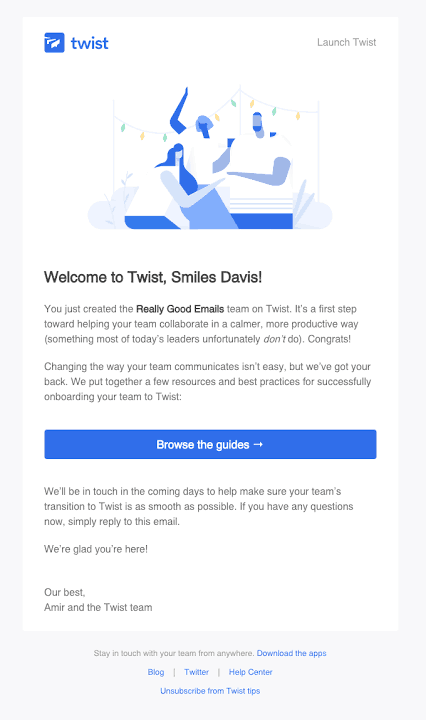
2. Cart Abandonment Email Sequence Example
Cart abandonment emails provide a chance to convert leads into paying customers. Customers who abandon carts have already shown high purchase intent, so these emails can be powerful in closing the sale.
The sequence typically includes reminders with product details and personalized recommendations. Offering incentives, such as discounts or free shipping, can encourage completion. The general structure can be similar to:
The sequence typically includes reminders with product details and personalized recommendations. Offering incentives, such as discounts or free shipping, can encourage completion. The general structure can be similar to:
- First Email: A reminder about the abandoned cart within 24 hours.
- Second Email: A follow-up with an inquiry about what went wrong, usually sent within 48 hours.
- Third Email: A last-chance offer, often with a discount, to finalize the sale within 72 hours.
This sequence can be customized to match your business and customer segments, and can be extended for more impact.

3. Cross-Sell & Upsell Email Sequence Example
Cross-selling and upselling encourage customers to buy more or upgrade after their initial purchase.
When crafting these messages, start by asking how their purchase went and how you can help them further. Then, suggest a better version of the product they bought or recommend additional items they might need.
Keep the tone helpful rather than pushy—focus on how the new items can benefit them instead of urging them to buy right away.
When crafting these messages, start by asking how their purchase went and how you can help them further. Then, suggest a better version of the product they bought or recommend additional items they might need.
Keep the tone helpful rather than pushy—focus on how the new items can benefit them instead of urging them to buy right away.
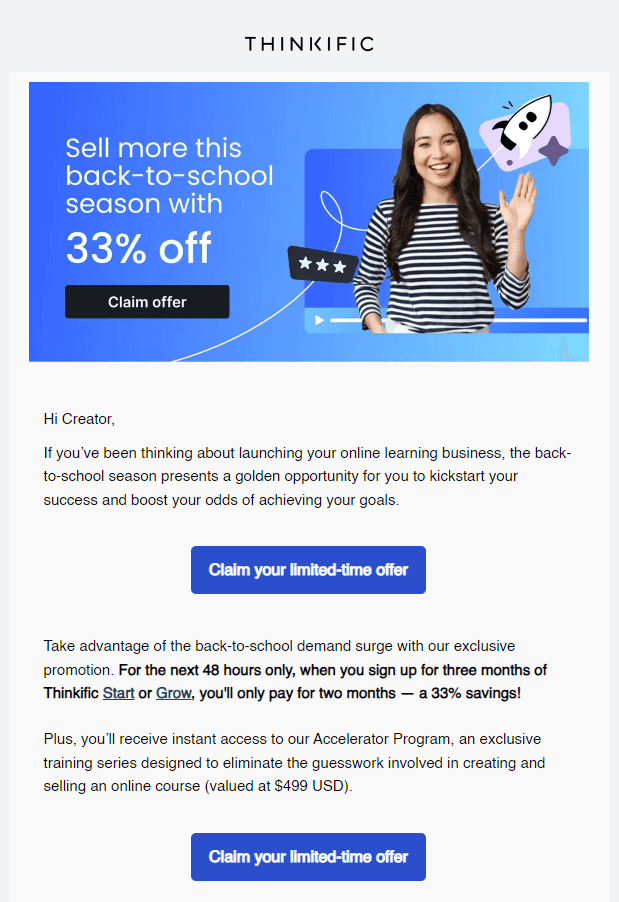
4. Lead Nurturing Email Sequence Example
Lead nurturing emails are designed to build relationships and move leads through the sales funnel. These emails should be informative and engaging, offering value to your subscribers.
Start by educating your leads about your business and its offerings. Then, introduce your products or services, address potential objections, and create urgency (if applicable).
The focus should be on providing enough information to make them feel confident in their decision to engage further, whether by signing up for a trial or making a purchase.
Start by educating your leads about your business and its offerings. Then, introduce your products or services, address potential objections, and create urgency (if applicable).
The focus should be on providing enough information to make them feel confident in their decision to engage further, whether by signing up for a trial or making a purchase.
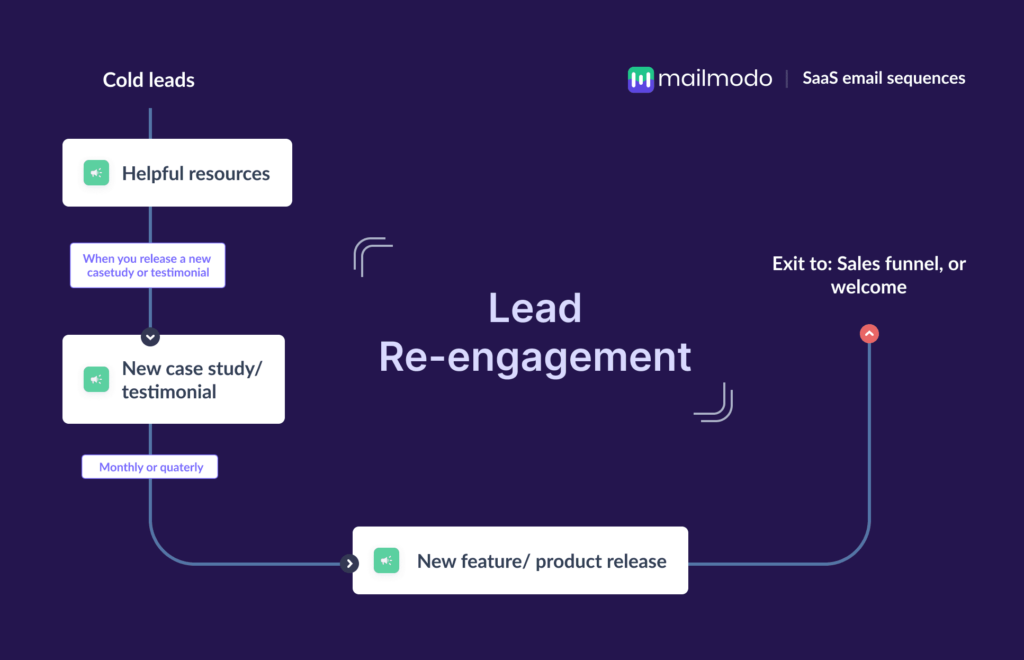
5. Re-engagement Email Sequence Example
Re-engagement emails aim to rekindle interest from inactive users. They’re not focused on immediate sales but on getting subscribers to re-engage with your brand.
This sequence should include gentle reminders, an offer to update preferences, and even a request for feedback. It’s important to segment your audience and create targeted re-engagement strategies.
For example, you can offer a special discount to draw them back or ask if they’d like to unsubscribe if they no longer find your content relevant. The goal is to remind users of the value you offer and encourage them to interact with your brand once again.
This sequence should include gentle reminders, an offer to update preferences, and even a request for feedback. It’s important to segment your audience and create targeted re-engagement strategies.
For example, you can offer a special discount to draw them back or ask if they’d like to unsubscribe if they no longer find your content relevant. The goal is to remind users of the value you offer and encourage them to interact with your brand once again.
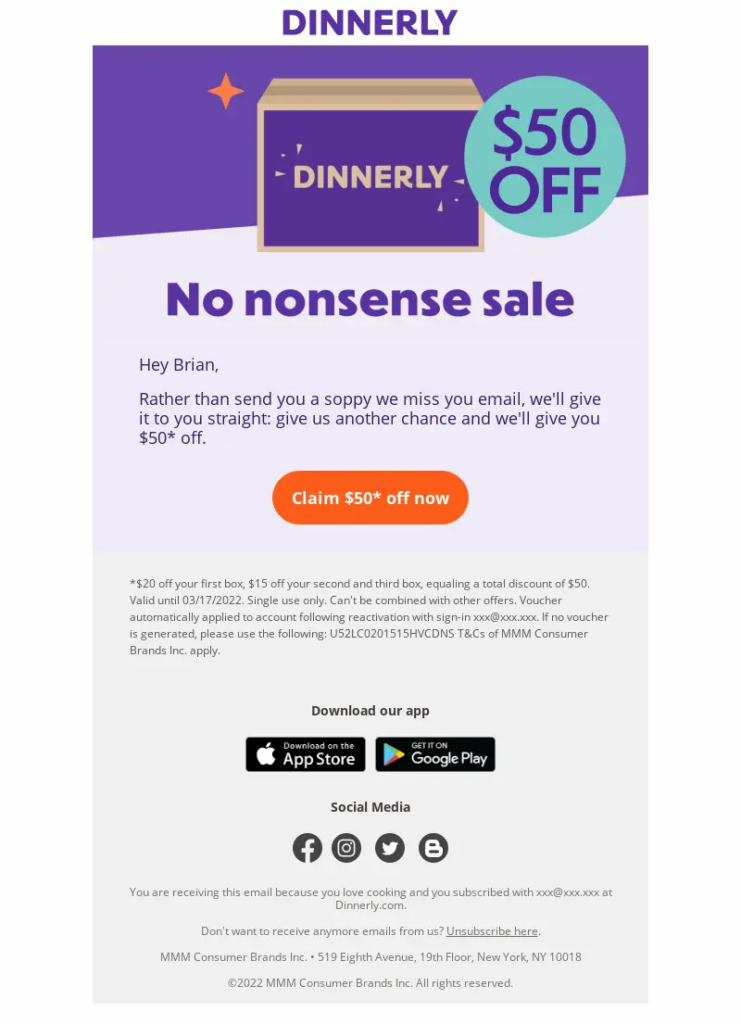
6. Conversion Sequence Email Example
Conversion sequences focus on persuading leads to take a specific action, such as making a purchase, signing up for a trial, or booking a meeting. These emails are designed to push prospects down the sales funnel with clear calls to action and time-sensitive offers.
A typical sequence might look like this:
A typical sequence might look like this:
- Opening Email: Relate to the prospect’s action, such as signing up for a trial or attending a demo.
- Benefits Email: Highlight how the product can solve their specific needs.
- Social Proof Email: Share customer reviews or testimonials to build trust.
- Offer Email: Include a compelling offer with a deadline to encourage immediate action.
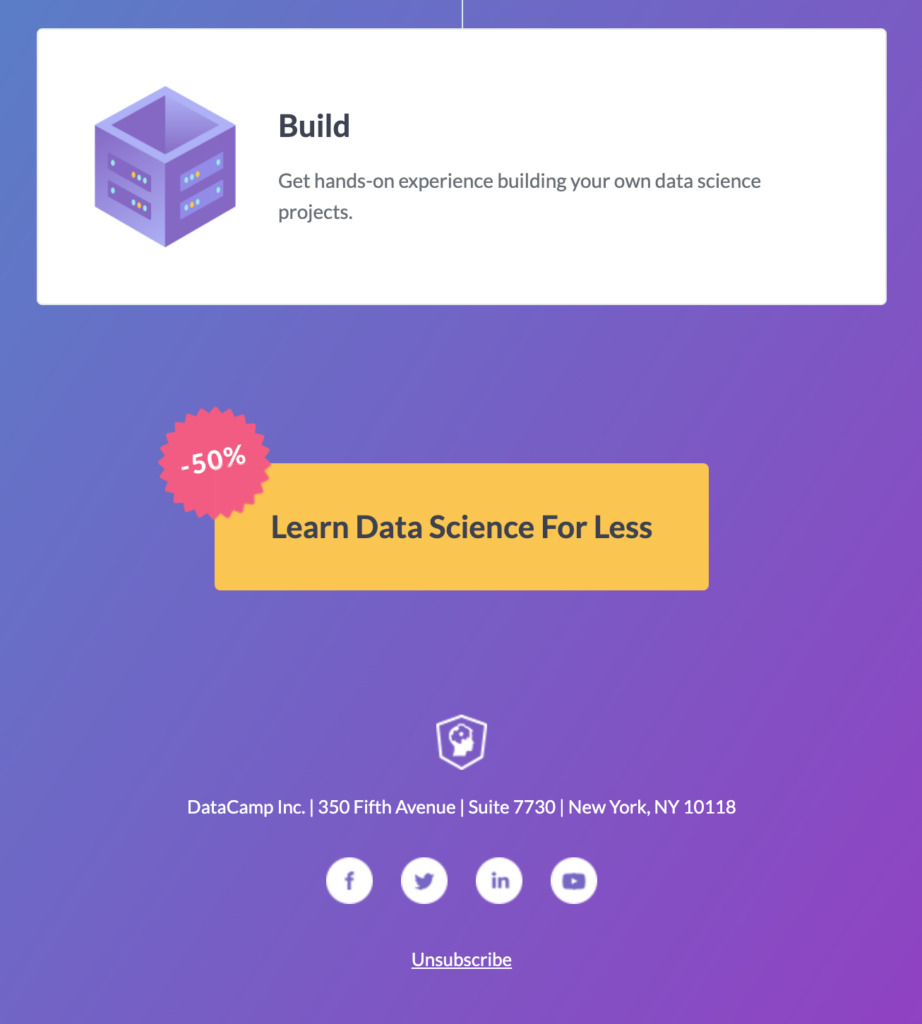
7. Event Email Sequence Example
Event email sequences are used to promote, remind, and follow up on events, whether online or offline. These sequences are divided into pre-event and post-event emails.
- Pre-event emails are sent to build excitement, remind people to register, and offer preparation details.
- Post-event emails are designed to gather feedback, offer additional resources, or upsell products, as event attendees are already interested in your offerings.
For example, for a webinar, you’d send an announcement, a reminder to register, and follow-up emails with event highlights or a thank-you note. These emails can also encourage attendees to sign up for additional services or products based on their interest.

Clearout: Your Partner in Perfecting Email Sequences
Crafting a great email sequence starts with a clean, deliverable list. Here’s how Clearout helps:
- Validation: Say goodbye to invalid addresses and hello to a healthier list.
- Deliverability Insights: Ensure your emails land in the inbox, not the spam folder.
- Personalization Made Easy: Use accurate data to create highly tailored campaigns.

Make Every Email Count
A well-structured email sequence is the backbone of any successful marketing strategy. By focusing on list quality personalization, timing, and engaging content, you can build trust, nurture leads, and drive conversions. Ready to take your email marketing to the next level? Start by ensuring your list is clean with Clearout.
Recent Posts
16 Dec 2025
What Is Free Trial Abuse in SaaS & How to Stop It
Learn what free trial abuse is, its types, how it impacts your SaaS and ways to prevent it. Discover ...
27 Nov 2025
Clearout Recognized In Forbes India DGEMS Select 200 | 2025
Clearout featured in Forbes India DGEMS Select 200 (2025 Cohort) for its innovative & scalable solut ...
21 Nov 2025
9 Hidden Bot Patterns Behind Modern Form Attacks
Wondering how bots still slip through your forms? Explore 9 hidden bot patterns behind modern form a ...
19 Nov 2025
10 Proven CRM Migration Best Practices for 2026
Explore the best practices of CRM migration in 2026 and learn how to audit data, map fields, cleanse ...
19 Nov 2025
How Syntax, Domain, and SMTP Email Validation Checks Work
Explore how syntax, domain, and SMTP email validation checks work and how they help identify formatt ...
Clearout's
Form Guard
Validate email, phone & name on any forms!
- Real signups only
- Verified emails
- Valid phone numbers
- No fake names
- Cleaner CRM
- No devs needed
Email Verification, Email Finding Form Guard & Prospecting Service
Expand Your Reach By Finding & Verifying Ideal Prospects.

